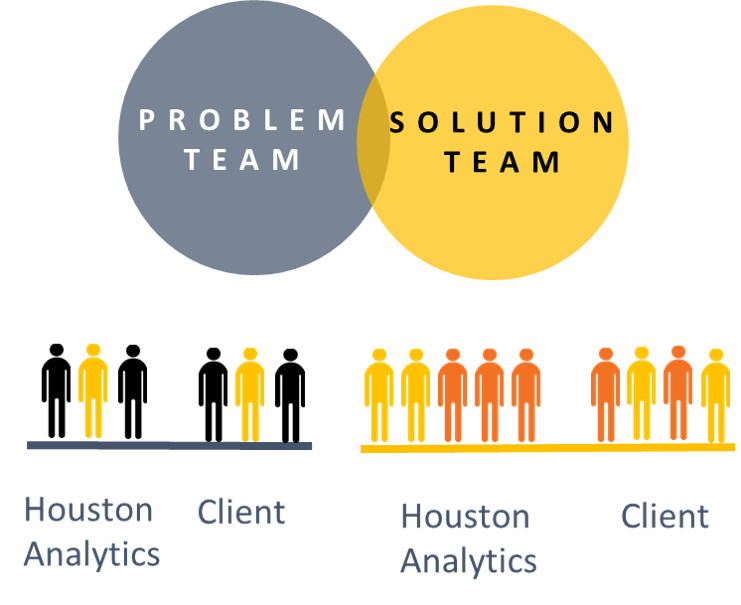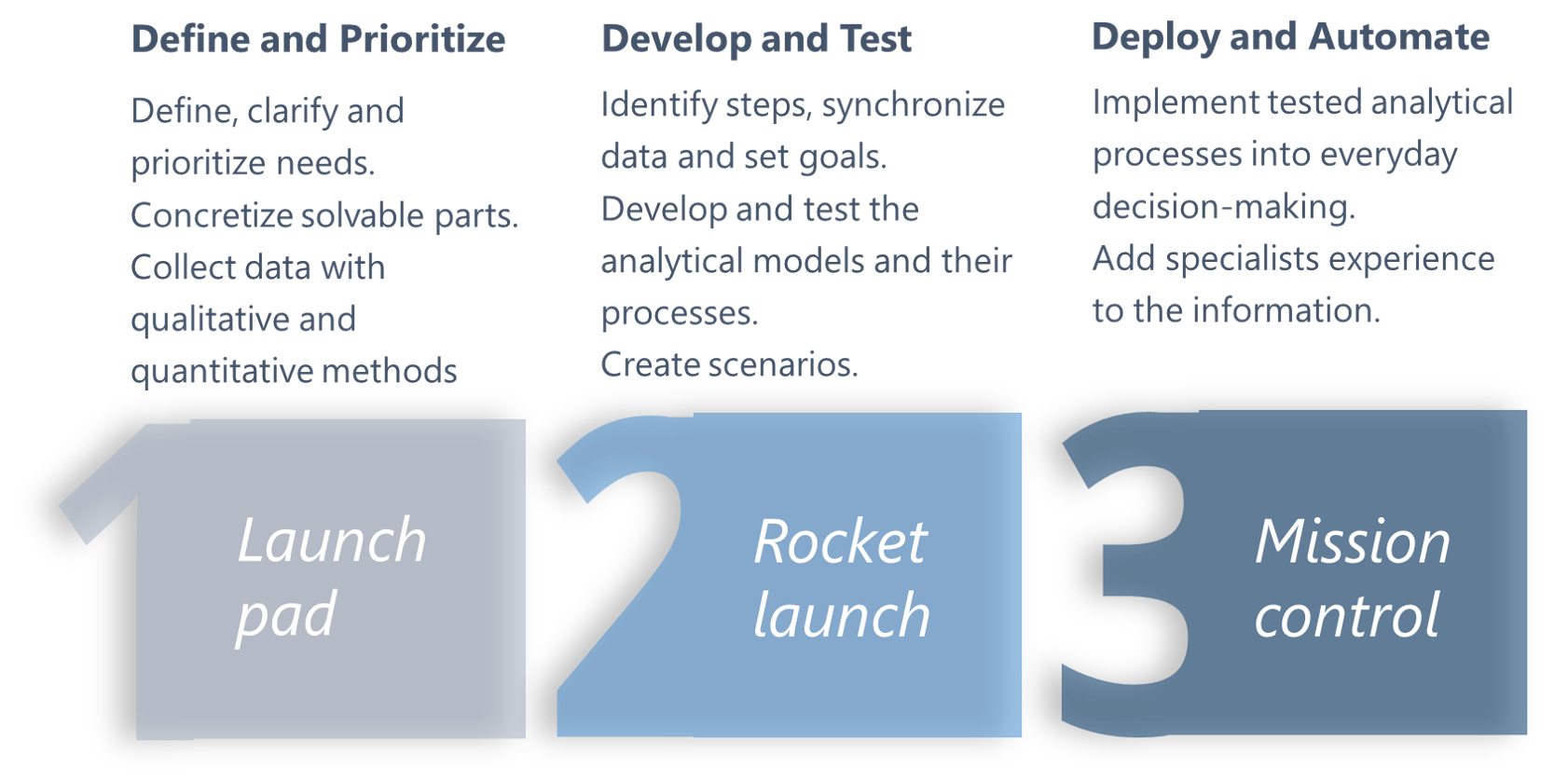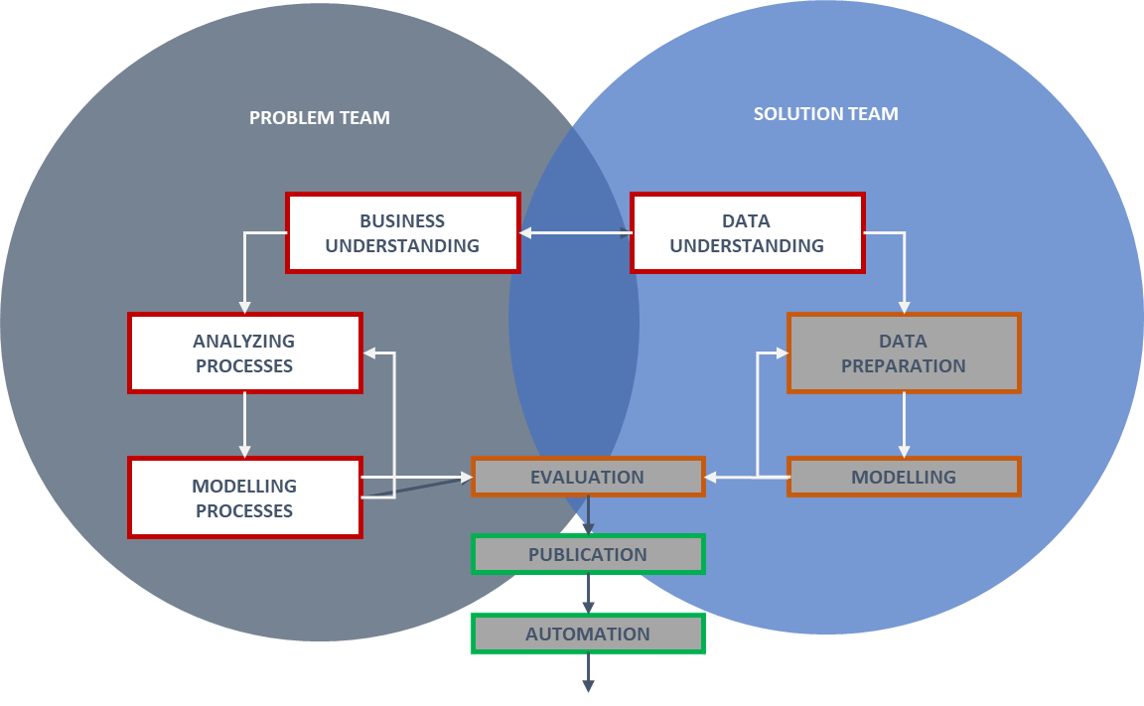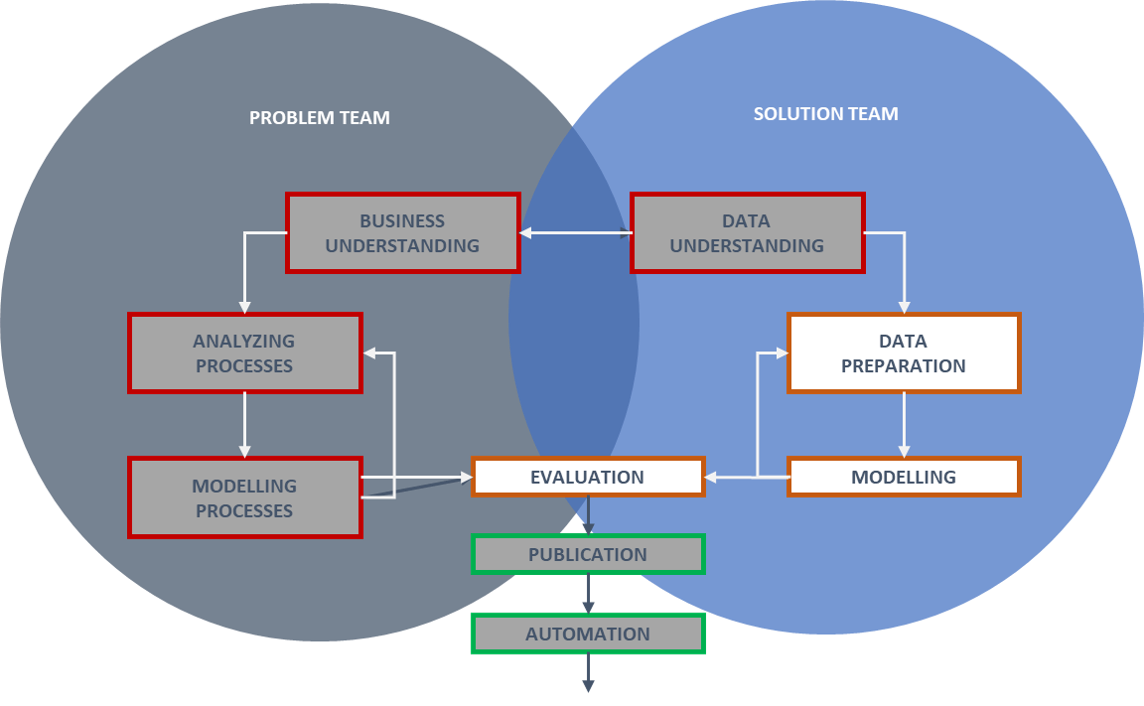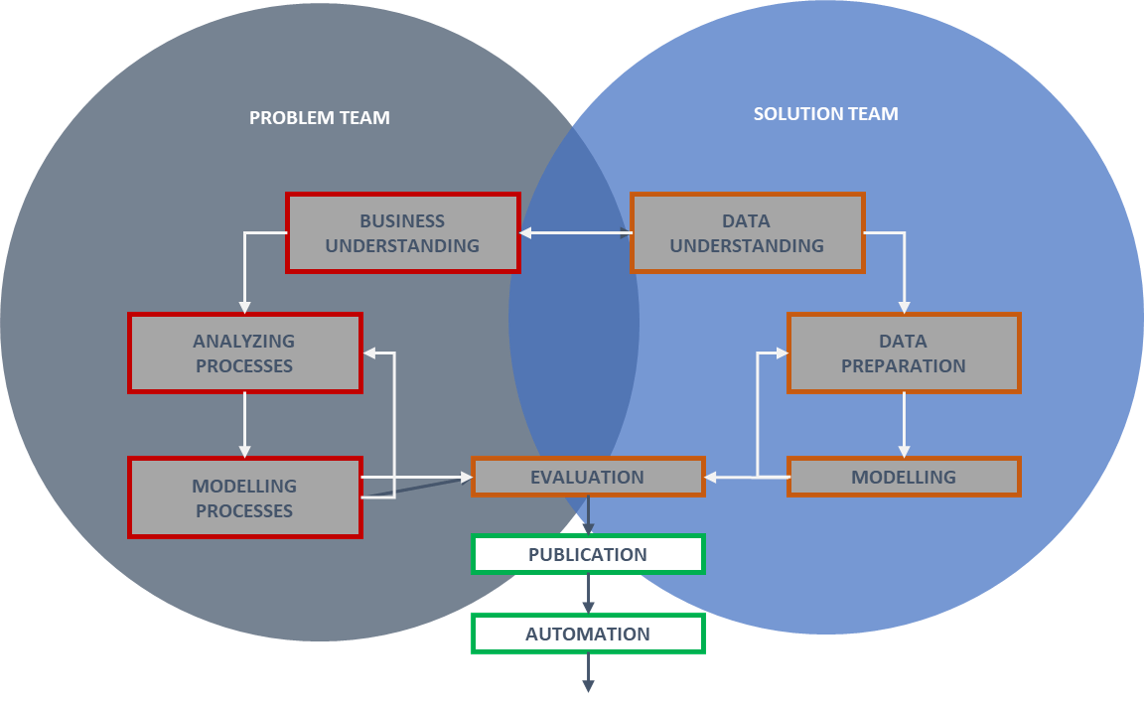Crafting improved business operations through agile analytics projects
Regardless of the application area or industry, Houston Analytics experts have the ability to quickly identify, create and iteratively refine the best solutions for our customers’ businesses.
Houston organizes projects around our two-team Problem-Solution model. In practice this means that the work is done in two teams, both of which include experts from Houston Analytics and the customer’s side.
By combining the customer’s domain expertise and Houston Analytics' analytical capabilities, we ensure the best possible outcome. Houston typically has the main execution role in many tasks but not all. However, it is guaranteed that all information and skills related to created processes will be transferred to customer during the project.


